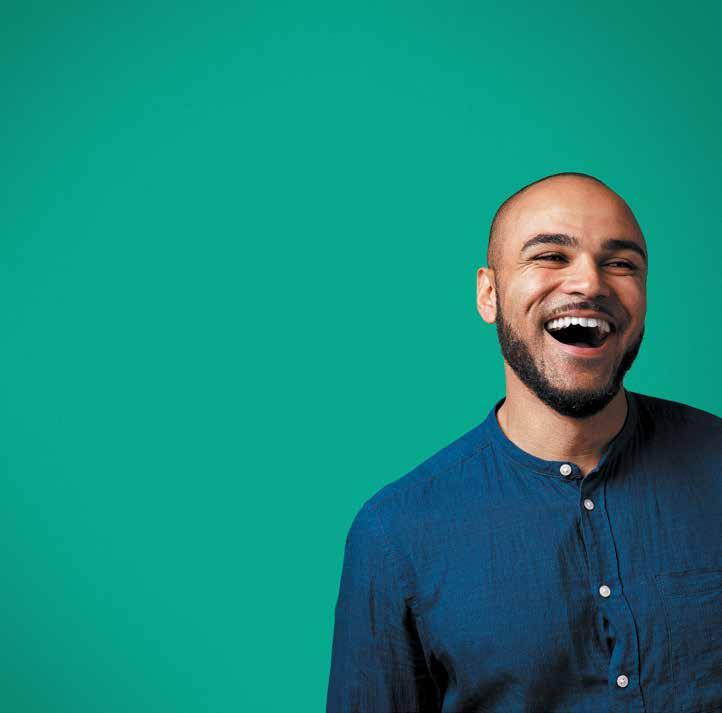COME IN!
The theology of hospitality
Are we done yet?
Steve Pokorny’s urgent mission
Mom entrepreneurs rewrite fashion


Are we done yet?
Steve Pokorny’s urgent mission
Mom entrepreneurs rewrite fashion

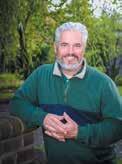

• Equip families to not only survive the culture, but thrive in their faith... introduce your families to theology of the body!
• Gift them with the only magazine that presents all aspects of life through the lens of St. John Paul II’s theology of the body.
WE CAN TAILOR A PARTNERSHIP THAT FITS YOUR NEEDS, BUT OPTIONS INCLUDE:

GOOD
• Purchase bulk copies of Embodied to give away at church doors

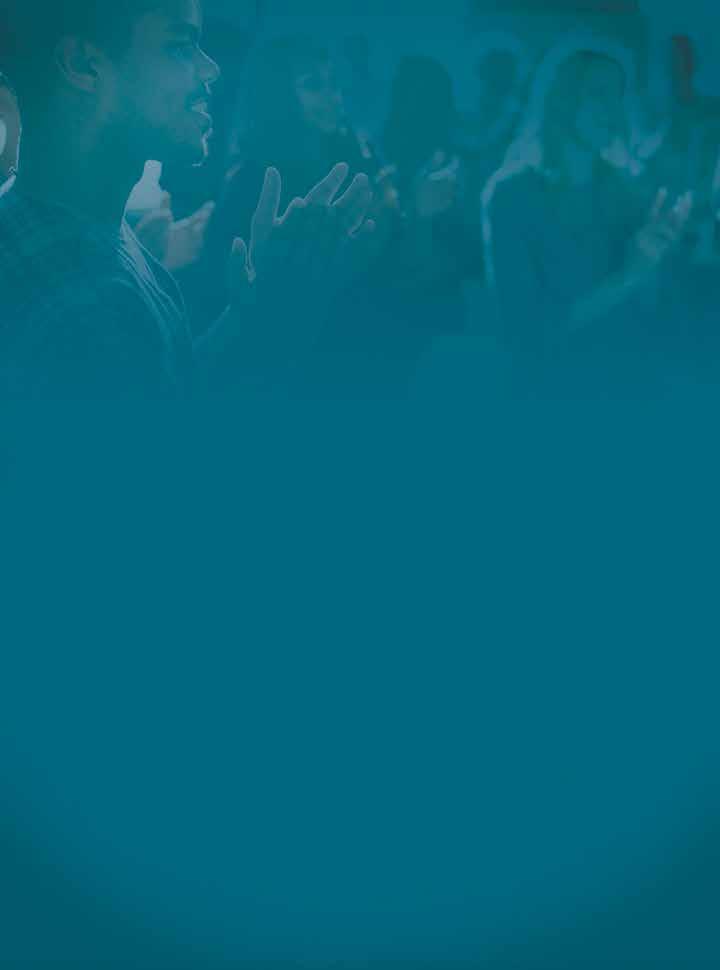
• Use Embodied content as starting point for small group discussions
BEST *
• Gift every school family with a subscription for one year.
BETTER *
Gift a subscription to:
• All new parish families as part of your welcome package
• Each RCIA candidate or catechumen
• All teachers in your school
All parishes promoting Embodied also receive ready-made messaging for bulletins, parish emails, social media.
* Better and Best options are especially impactful if you have a parish school that uses a theology of the body curriculum.
Interested? Contact us at parishprogram@embodiedmag.org.
5 THE VIEW FROM HERE
CHRISTINA RIES
6 THE WHOLE STORY
7THE CALL TO LOVE FINDING HER PATH OF LOVE

15
One year ago, two Catholic friends fulfilled a bold dream and launched a children’s clothing line. “So many big brands out there are promoting ideas and products in direct conflict with our faith. We need to provide people with better options.”
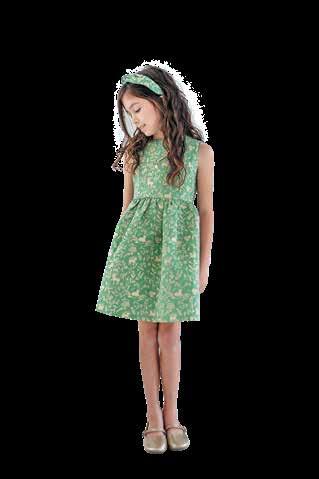
16
 LAURA M. DEVICK
LAURA M. DEVICK
Three married couples reflect on their journeys of growing in responsible parenthood. “People just automatically think about materialistic things,” one woman said. “I feel like it is so much more than that.”
STEVE POKORNY
One man’s story of his descent into a pornography addiction and how an unexpected talk on theology of the body was the key turning point on his climb out to freedom.
TOB PARENT CORNER
21 ORIGINAL BEAUTY
THE SOURCE OF OUR WORTH
KATHLEEN BASI
Theology of the body calls us to make a gift of ourselves to others. In terms of hospitality, that means being present to the other person and not preoccupied with the surroundings—something often easier said than done.
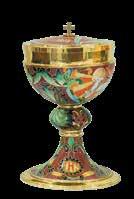
MARIA COSSELL
One woman’s discovery that the beauty of a small, consecrated host lies in the reason why God makes Himself available to us this way.
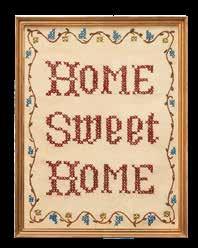
CHRISTINA RIES
Former HGTV designer Paige Rien helps Catholics embrace the good-enough, here-and-now.
PHOTO ESSAY
When Karol Wojtyla, the cardinal archbishop of Krakow, Poland, came to Rome in August 1978 to help elect a new pope, he brought along the lengthy handwritten manuscript of a book that he had been prayerfully crafting for nearly four years. It was almost complete, and he wished to work on it, when he could, during the conclave. Page one bore the unusual title (in Polish): “teologia ciala”—“theology of the body.” The hundreds of pages that followed held perhaps the most profound and compelling Biblical reflection on the meaning of our creation and redemption as male and female ever.
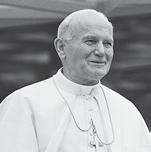
After the election of Pope John Paul I, Wojtyla returned to Krakow and completed his manuscript. Soon after that, to the astonishment of the whole world, he emerged from the second conclave of 1978 as Pope John Paul II. And his “theology of the body”—delivered as a series of Wednesday talks between September 1979 and November 1984 rather than being published as a book— became the first major teaching project of his pontificate, establishing the core of John Paul II’s great vision of what it means to be human.
Still, it took some time for people to grasp the significance of what John Paul II had given us. It wasn’t until 1999, for example, that papal biographer George Weigel described the TOB to a wide readership as “a kind of theological time bomb set to go off, with dramatic consequences....perhaps in the 21st century.” While the pope’s vision of the body and of sexual love had “barely begun to shape the Church’s theology, preaching, and religious education,” Weigel predicted that when it did it would “compel a dramatic development of thinking about virtually every major theme in the Creed.”
From “Theology of the Body for Beginners” by Christopher West
Spring 2023
PUBLISHED BY Embodied Publishing info@embodiedmag.org
EDITOR
Ann Gundlach • ann@embodiedmag.org
SENIOR EDITOR
Christina Ries • christina@embodiedmag.org
THEOLOGICAL ADVISOR
Katrina Zeno, MTS
DESIGN and PRODUCTION
b graphic design • www.b-graphicdesign.com
Embodied Magazine is published four times per year. The print edition is available for $49/year and includes a digital edition. The digital subscription alone is $25/year. Single copies are available for $12.00 each plus shipping. To subscribe or order, go to www.embodiedmag.org and click Subscribe.
Quantity discounts and bulk subscriptions are available. For information email contact@embodiedmag.org
Submitted materials become the property of Embodied Publishing and will not be returned. Embodied is granted the right to use the materials for any purpose and in any manner.
www.embodiedmag.org • 2615 Fairhill Drive Cincinnati, OH 45239
I enjoyed hearing my daughter Michelle and her husband share about a recent visit they made to the home of one of Michelle’s childhood friends. Between the two families, there were six children age 9 and under, five of them boys. Everyone who knows them would agree that, of the two, Michelle runs a tighter ship at home, so it was amusing to hear her recount with wide eyes, “It was so much fun, but wow, it got pretty chaotic at times....I don’t know how they do it!”
What jumped out at me was: “It was so much fun...” Despite the rambunctiousness with several very energetic boys leading the charge, and the ensuing mess and confusion, our daughter’s family came away happy and with fun stories to remember and retell (including my 4-year-old granddaughter’s tale of how she ended up with a streak of blue marker on her forehead).
We have a focus on hospitality in this issue, and this is a perfect example. The focus was on each other, enjoying the time together and celebrating this stage of life where both couples are all-in with parenting. The messes, chaos and probably less-than-Martha-Stewartlike presentation were backseat to just enjoying life, friendship and each other.
One of the main reasons I launched Embodied was to spark interest in learning more about St. John Paul II’s theology of the body. I am quite excited that we are now making available a free Discussion Guide with each issue which will make the magazine great for small-group study. Each Guide will have 8–10 questions based on the issue’s content, guidance for the group leader to promote conversations and where to go to learn more on the various TOB-related topics explored— websites, the Catechism of the Catholic Church, YouTube videos, books, podcast episodes, etc.
Discussion Guides are free and downloadable at www.embodiedmag.org .
the yard to be perfectly manicured. Focus instead on who around you might need a little TLC.
Our focus on the other spills over into the topic of responsible parenthood—the principle that guides married couples’ discernment about family size decisions. Be sure to read how two couples gradually came to view the gift of the other—any yet-to-be-conceived new child—as something more desired than some previous practical concerns as their hearts grew in generosity.

For me, one of the biggest takeaways I received from learning more about theology of the body is the importance of recognizing the dignity of other people and remembering that no matter how different we may be. We hope our hospitality articles inspire you to be more open to sharing the gift of yourselves with those the Lord puts in your life, even if takes you out of your comfort zone. Don’t wait for better furniture, more room or for
And we take a gripping look at one of today’s most prominent examples of devaluing the other—pornography. Today Steve Pokorny heads up a coaching practice to guide others out of pornography addiction and is successful because he knows firsthand the ease of the descent into complete selfishness with no regard for the dignity of those he used to feed his desires. It’s a hopeful story—trust me.
Ann Gundlach is the founder and editor of Embodied magazine and invites your comments at ann@embodiedmag.org

I’d always heard that a pilgrimage to the Holy Land was life-changing. And when I was given the opportunity to visit the Holy Land this past November, I wasn’t disappointed. Now, when Scripture describes Jesus taking Peter, James, and John up a high mountain where He is transfigured, I can see that mountain in my mind. Now when I read of Jesus’ agony in the garden, I can picture myself prostrate before the rock on which he sweat blood.
However, I wasn’t prepared for the impact of one little word: hic. “Hic” means “ here.”
I first encountered this word in the Church of the Annunciation where a plaque on the ground proclaims, “The Word was made flesh here.” Here! Not somewhere else, not just in my mind or as part of a fictional myth. The Only Son of the Father became embodied here, incarnated in the womb of Mary here, and I was kneeling near that location here.
But “hic” wasn’t done with me yet. In the Church of the Nativity, another proclamation awaited me: “Jesus Christ was born here.” This was the spot, this was the place where the Invisible Deity became visible in a real town named Bethlehem, to real human parents, as a real human baby. In the synagogue of Capernaum, Jesus gave his Bread of Life Sermon here. He was clothed with human flesh, spoke with a human voice and scandalized those who heard him declare that his embodied flesh would be food to eat. And they walked away—here.
Then we arrived at the site of the crucifixion, and my heart could hardly sustain the truth displayed before me: Christ died on the cross here! I wasn’t looking at a painting by one of the masters or gazing at the crucifixion in a Stations of the Cross booklet. I was placing my hand into the hole where the cross stood. Here…here…2,000 years ago, the Divine Bridegroom gave his Body for his
Bride—not in California not in Sydney not in London, but in this unremarkable spot now turn salvific. I could hardly process the emotions churning inside of me.
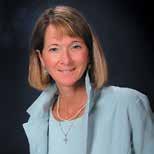
Finally, the pilgrimage moved on to the most sacred place in the Holy Land—the small chapel of the Holy Sepulcher. The Franciscan custodian of Jesus’ tomb celebrated Mass for our group, providing the culminating moment of my pilgrimage. In his homily he reminded us that the empty tomb announces that “Jesus is not here!” I’m not sure I even heard what he said next. The grandeur of “hic” suddenly transfigured into the most important truth of all—Christianity exists and thrives precisely because Jesus’ body is not here. “He is Risen! Indeed, he is Risen!” is our Easter cry. And where is our embodied God now? The Catechism declares the eternal “hic” of Jesus’ human body: “The Father’s power ‘raised up’ Christ his Son and by doing so perfectly introduced his Son’s humanity, including his body, into the Trinity” (no. 648). Right now, as you read this, there is a glorified human body united to the inner life of the Trinity. The “here” of Jesus’ human body is united to the Father by the power of the Holy Spirit in an eternal union and communion of Love. This is why someday our bodies will not be here on this earth but, by grace and God’s abundant spousal love, they will be raised and united to the glorified body of Christ our divine bridegroom—a reality, St. John Paul II says, that is anticipated in every Eucharist.
And it’s all because of one simple, but life-altering word: here

Jessica Reyes grew up with her younger brother and her parents in the city of Juarez, Mexico, right across the border from El Paso, Texas. She and her family were cradle Catholics. They had received the sacraments, but only went to Sunday Mass occasionally and did little more to practice the faith.
After finishing college, Jessica moved to El Paso to pursue a master’s in information technology. She met a young Catholic man named Omar (also non-practicing) and they promptly got married—in the civil courts. Two years later they moved to Dallas due to Jessica’s work as a systems engineer. Jessica hardly knew what marriage itself meant, much less marriage according to God’s plan as one of the sacraments of the Church.
At first, neither of them wanted children. They were content with their secular, day-by-day lifestyle. But, as time passed, a desire emerged in Omar to have a child. Jessica did not agree. She simply did not see herself as able to become a good mom. So after eight years of marriage, they divorced, and Jessica possibly faced an unhappy single life trapped by a secular focus.
But an unexpected turn of events took place shortly after the divorce. Jessica decided to go on a pilgrimage to Santiago of Compostela in Spain with some friends who were members of the lay movement Regnum Christi.
Jessica found herself attracted to these young men and women who practiced their Catholic faith and took it seriously. And while she would go to Mass more often, she still lacked a conviction that she was called to live as a practicing Catholic—or to have a personal, intimate experience of God.
So tenuous was her return to the faith that two things caused her to stop going to Mass altogether: the polarization of the 2020 election and the rise of COVID, with the

closing of churches. Jessica found herself scandalized by the posture of some Catholics, who acted as if they were “entitled” to Mass at any cost.
A Regnum Christi friend asked her, “Why are you mad at God?” Pondering this question, Jessica decided to attend an Ignatian spiritual exercises retreat at a Jesuit center. During this retreat, Christ, the good Shepherd, seeking his lost daughter, made his way through every thicket to encounter her. He granted Jessica an experience of his presence in prayer that was so vivid and real, she felt a little like St. Paul when he was knocked to the ground.
There arose in Jessica the unshakeable conviction that God was real. He was present in his Church, and she knew she was called to seek him more deeply and dedicate her life to him.
During that retreat, she received a word from the Lord that she didn’t understand: “You are to make vocations more accessible.” A few weeks later, she talked with a priest about it. He suggested that she attend an upcoming summit on priestly and consecrated vocations at the Legionary of Christ seminary in Cheshire, Conn.
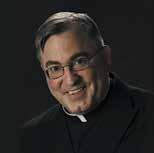
Taken quite aback by this request, she agreed to go. There she discovered the meaning of the Lord’s word to her: she would soon become the leader of the local Vocation Action Network of Dallas. This is an outreach effort in which people pray for young men and women considering priesthood and consecrated life and invite them to encounter God personally and go on retreats to “test their call.”
One single experience of deep, intimate prayer was capable of changing Jessica’s life forever. As St. John Paul II never tired of reiterating: “We are able to love because He loved us first.”
THE SPRING 2023 7
One year ago, two Catholic friends fulfilled a bold dream and launched a children’s clothing line.
Lily & Lamb is the first custom-crafted children’s clothing brand inspired by the Catholic faith, founded by Katie Ratliffe in Georgia and Anneli Schraufnagel in Wisconsin. The brand flowed from their deep faith, their knowledge of theology of the body and their parenting experience.
Lily & Lamb’s debut collection, the Agnys Collection, was designed for girls ages 4–12 and featured a brocade dress with a teal-green and gold pattern showcasing different Lamb of God motifs and Hawthorn flowers. It began appearing on the Instagram feeds of high-profile Catholics, cheerful bursts of green in family Easter photos. Then Fox News invited Katie and Anneli to come for an interview.
Less than two months after launching, the dress had sold old.
“It was all very surreal,” said Katie, 40, who lives in Atlanta with her husband, Chas, and their five children— Addie, 11; Dani, 9; Charlie, 8; Beau, 5; and newborn Gianna.
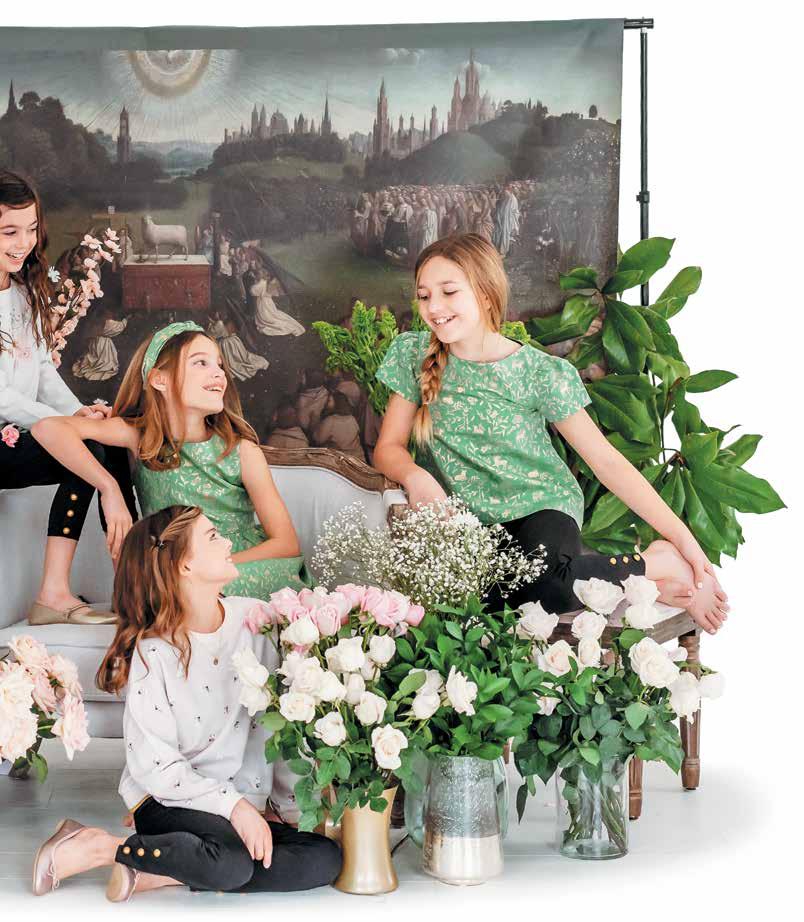
“I really can only give credit to God. We are busy moms who are committed to putting our vocations as wives and mothers first. During my morning prayer time, I would ask God to multiply our efforts with Lily & Lamb because we never seem to have enough time. When we got the call to be on Fox News and our dresses sold out, I knew God had answered that prayer.”
Katie recently shared her story with Senior Editor Christina Ries.
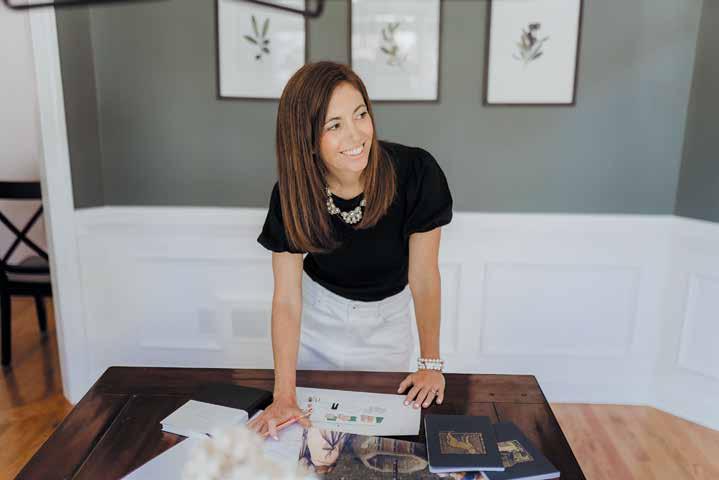
How did the idea for Lily & Lamb first spring up?
For years, I felt that God wanted me to use my talents and experience to help build up his kingdom. In prayerful discernment it was clear that it was not a call to ministry but to mission-based business. My friend Anneli and I had brainstormed lots of ideas. One of those ideas was Lily & Lamb, but since we had zero experience with children’s clothing and accessories, we initially dismissed it.
What compelled you two to finally make a go at it?
We had started and stopped quite a few ideas, and we were a bit frustrated that we hadn’t brought any of them to fruition. But Lily & Lamb kept popping back up in our minds. Usually if an idea or thought keeps nudging me,
I believe it’s coming from the Holy Spirit. We decided to commit all our focus on Lily & Lamb to see where it would take us. And here we are today!
Did it feel crazy, given that neither of you had any experience in fashion?
Yes, and that’s why we decided not to share the idea with family and friends. We knew they would just talk us out of it—not because they’re not supportive, but because they love us and would want to protect us. But one of my favorite quotes is from Mother Angelica, who said, “Unless you are willing to do the ridiculous, God will not do the miraculous. When you have God, you don’t have to know everything about it. You just do it.”
When you consulted industry experts, they advised against it, saying it was too hard to crack the market. How discouraging was that?
For me it was more frustrating than it was discouraging. I tend to struggle with self-doubt, and I didn’t want more voices adding to that doubt. So we became intentional about surrounding ourselves with people who wouldn’t tell us that we couldn’t do it but would tell us how we could do it.
There was also part of me that found the feedback motivating. I think some of the best business ideas are the ones people think are too hard. In order to stand out, you must be willing to do what no one else will do.
Sometimes the teacher becomes the student. That was true for Katie Ratliffe when she volunteered to teach catechism classes to teens at her parish. She was tasked with teaching a mini-series on theology of the body.
“So essentially I learned TOB by teaching it,” Katie said. The impact was profound.

“It was a pivotal moment in my faith life,” she said. “At that point in time, I would describe my faith as lukewarm, and I was on birth control. One Sunday after class, I got into my car and sat there for a bit, feeling like a hypocrite. I remember thinking, ‘Either I believe what the Church teaches, or I don’t.’”
By the time she reached her house, she’d made up her mind.
“When I arrived home, I told my husband it was time to stop using contraception. From that point on, I dug into a lot of books on TOB to learn more and it was completely transformative.”
Why is it so hard to find beautiful dresses for girls?

I think some of it is our current culture—people don’t really dress up as much anymore. Plus, the world of fast fashion is all about pumping out new styles fast and cheap. So a lot of the styles we see are cheap-looking and are not designed to last. We wanted to design something that would be classic and timeless so these dresses could be passed on.
What’s been the biggest hit for you—going on Fox and getting national exposure? How did that come about?
Yes, that was an incredible experience. When Anneli was in high school she babysat for Rachel Duffy,
The depth and wisdom of St. John Paul II’s teachings filled Katie with awe.
“I was just blown away by the beauty of the Church’s teaching,” she said. “Once you see and understand something so beautiful, you simply can’t ignore it. It changes you. I think the core concept of the dignity of the human person is a huge foundation because it impacts so many key issues in our world. If you look at our culture, most of the attacks we see are on human dignity: abortion, pornography and transgenderism—to name a few—treat people as objects and are focused on self-serving happiness rather than self-giving love.”
Her TOB knowledge has proven indispensable as a parent.
“Theology of the body is an incredible tool for a Christian parent, especially when navigating difficult or uncomfortable questions that come from your kids,” Katie said. “For example, I explain to them that we don’t believe in abortion because each human life has value from the moment of conception. I’ve also fielded questions about natural family planning from my daughters and explained that we can embrace our bodies as God designed them and trust him with our families. We’ve had to teach our kids the dangers of pornography and explain that the human body is not an object to be used.”
The Church teachings have resonated.
“Kids are very black-and-white, so speaking the truth to them—in an age-appropriate way—gives them clarity and it always seems to make sense to them when it’s explained in the light of our faith.”
‘Something so beautiful you simply can’t ignore it’
Kids are very black-and-white, so speaking the truth to them—in an age-appropriate way—gives them clarity.
who is co-host of Fox & Friends Weekend. They have kept in touch throughout the years. When Anneli sent Rachel a Lily & Lamb package for her daughters, Rachel fell in love with the brand. She pitched us to her producer, and three weeks later we got a call from Fox. Not only was it an amazing experience, but the best part was bringing our daughters along to model the clothes and share the experience with them.
Identity is a core theology of the body concept—knowing who you are and whose you are. Why is that such a powerful foundation?
We live in a broken world. And I think we are all susceptible to feelings of insecurity. Our culture feeds on this and is quick to create labels of shallow and even false identities. But if we are grounded in the truth that we are children of God and He—the King of heaven and earth—is our Father, that brings a sense of security, strength and confidence to be who God has called us to be.
How does that help counter all the cultural attacks on our faith?
A big motivation for starting Lily & Lamb was to find an innovative way to impact our culture. And if you look at what’s going on in our culture, our kids are being bombarded with messages grounded in relativism. We have to arm our children with the truth. Girls will face a lot of pressure to fit in and conform to the culture. But if they know their true identity as a daughter of God, they will be more confident to go against the current and live counter-culturally.

How does theology of the body tie into Lily & Lamb?
Theology of the body teaches that what we do with our bodies matters. I think that includes how we dress. We are giving families a way to wear their faith, which we hope will serve as a physical reminder of who they are called to be. In addition, the stories and messages around all our products are designed to celebrate concepts like human dignity, our identities as children of God and self-giving love.
You embraced storytelling in marketing Lily & Lamb—even creating a film based with drone footage, dramatic string music, an original poem and a real lamb. That is next level!
From the start, we have been focused on creating a brand, not just selling products. And as a mission-based brand, we want to impact culture. Storytelling is a timeless way to pass on our faith, and it’s especially effective with kids.
Anneli is incredibly talented with photography and videography, so we knew from the beginning that we wanted to create a film to help bring our collection to life. The story of Agnys is meant to inspire girls to be brave in living their faith in the midst of our darkened culture. We love hearing feedback from our customers on what the poem and film meant to them.
One of your most powerful messages shared in that film is: “Suffering is not the end…but that our victory is in the cross.”
There’s something going on in our culture that tries to label all suffering as unjust, and therefore we try to eliminate it at all costs. But we are all going to suffer during different points in our lives. To think otherwise
Girls face a lot of pressure to fit in and conform to the culture. But if they know their true identity as a daughter of God, they will be more confident to go against the current and live counter-culturally.
is naive. Just look at the Holy Family and all the suffering they endured!
There is so much beauty in suffering because it often takes us from self-reliance to total dependence on God. We have both personally learned that when we surrender and truly depend on Him, He can work miracles in our lives.
How does theology of the body inform the way you dress? What’s your go-to wardrobe?
As a home-schooling mom with five children, it’s easy to fall into dressing sloppy. And I definitely dress like that on many days! But TOB has inspired me to embrace my femininity and dress in a way that makes me feel like the best version of myself. In other words, it’s less about trying to get attention and more about what helps me feel confident.
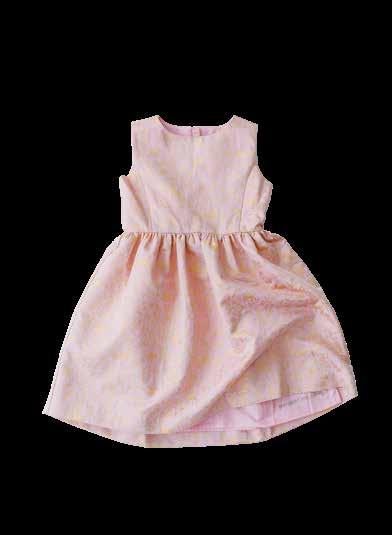
That said, my personal style is a bit preppy and sporty. I love the classic look of a button-down shirt with jeans. My other go-to is a blouse with a cardigan over it—it’s great for the weather in Georgia which can be cold in the morning and hot in the afternoons.
How does your outfit affect your outlook?
For me, it’s about confidence. When I feel comfortable and confident in my outfit, I’m less likely to be self-conscious. That confidence equips me to focus on the people around me and share God’s love with them.
What have you learned from becoming an entrepreneur?
We’ve learned so much in a short period of time—and we continue learning every day. There are certainly some practical things we’ve learned— how to set up an LLC, how to create an e-commerce store, how to navigate the shipping and customs process.
But for me, I’ve really grown in the area of persistence. When a lot of people tell you no or don’t call you back, it’s easy to want to quit or assume what you’re doing will never work. But I’ve learned to set those thoughts aside and keep pushing, and eventually, there’s a breakthrough.
1Never give up. Building something from nothing requires incredible persistence. For example, we probably contacted close to a hundred factories before we found one that was willing to take us on.
2Include your family. Our first vocation is our family. So rather than separate work and family, we bring our family into the business and everyone helps out. A bonus is that our kids are learning some amazing skills and life lessons along the way.
3
Do what’s uncomfortable. For me, it’s easy to avoid doing things that make me uncomfortable. For example, going on a national news show was very uncomfortable! But I had to push through the fear and uneasiness in order to do what was best for the business.
4Give the rest to God. When starting a business, it’s easy to fall into the trap of self-reliance. There’s so much to do! But in this journey, God continues to invite me to depend on Him more and more. Surrendering to his will for the business has brought a sense of peace. And I continue to see that He is never outdone in generosity.
—Katie Ratliff
For most of my life I’ve always played it safe, going through the motions of what I thought was expected of me. Go to college. Get a job. Work really hard to get ahead, etc. And yet I was never really happy. I was always searching for more.
Even though I’ve always had an entrepreneurial heart, it always seemed too scary, too impractical and just too risky to start a business. But since taking the leap to launch Lily & Lamb, I have so much more joy in my life.
Do you feel braver, having made this leap?
I have a fear of failure, so taking the risk of starting a business has definitely made me feel braver. When it came down to it, though, I felt that it would be more of a failure to not take the leap than to take the leap and fail. So in a sense, just starting the business and getting to where we are today is a huge success for me.
Does this newfound courage carry over to other areas in life?
Ultimately, I’ve learned that if you spend time in prayer and discern that God is calling you to do something, you have to act and then place your trust in Him. For example, around the same time we were starting Lily & Lamb, I felt God was calling us to move our kids to a hybrid homeschool. I never thought I was the homeschooling type and I had a lot fear that I couldn’t do it. But homeschooling has been one of the best decisions for our family and we have never looked back.
What have your kids learned from watching you launch a business?
One of the reasons we chose to start a children’s brand was so that our kids could be involved. This has been one of the greatest joys for me. Our kids help us brainstorm ideas, test products, model in photoshoots, package and ship orders and more. I hope they are learning to follow the dream God has for their lives, as well as important lessons in hard work, courage and fortitude.
Your clothing celebrates girlhood. How else do you celebrate girls, as a mom?
We definitely try to celebrate and talk about the gender differences in our home—how boys and girls complement one another. When my girls were younger, we did all the cute girly things—play dress up, paint their nails, have dance parties.
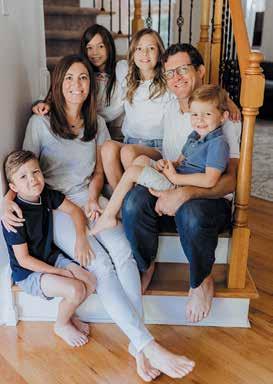
As my girls are getting older and quite frankly in a bit of a tomboy phase, celebrating girlhood has evolved. Now it’s about sitting in their room with them at night, talking and laughing. Or making sure we set aside time for a girls’ night out. Women are meant for connection, so it’s ultimately about spending time together.
How have your Daughter of the King products been received—the bracelet, earrings, journal and sweatshirt?
The Daughter of the King collection was a huge hit. We sold out of several products a few times and had to move quickly to restock them for the Christmas shopping season.
Are you excited to reach boys with the “Life with Christ is A Wonderful Adventure” line? I love the retro feel!
One of the biggest requests we received on our website was for boys’ items. Plus, Anneli and I both have boys and they were eager to be a part of the Lily & Lamb journey. It’s amazing to see my two boys cuddle up in their “Life with Christ” blankets. They take them all over the house! They also love wearing the T-shirt.
Why does that message of adventure resonate for you?
I’m very drawn to the apostolic charism within the Church. Reading about the early apostles, martyrs and saints is incredibly inspiring. Since putting Christ at the center of my life, so much has changed. For example, Anneli and I met each other when helping friends launch “You, Me and NFP,” a ministry designed to share the joy-filled living of embracing the Church’s teaching on marriage and family. That eventually led us to launch Lily & Lamb, where we’ve had opportunities to travel together to New York, Las Vegas and Washington D.C., to name a few.
We have so many ideas for Lily & Lamb, and the possibilities seem endless. But this year we are hoping to build upon what we have started with girls’ and boys’ collections, as well as add items for babies and toddlers.
So many big brands out there are promoting ideas and products that are in direct conflict with our faith. We need to provide people with better options. We hope our story might inspire others to take their ideas and bring them to life. We as Christians have so many talents and gifts to share with the world—we need to put them to work to truly impact our culture.
 by Lindsay Caron
by Lindsay Caron
The body reveals the soul. Recently I spent time renewing this truth in my own life. In particular, I experienced a reminder about setting emotional boundaries to protect my physical well-being. My inability to set boundaries around expectations during the Christmas holidays led me to experience real physical symptoms. Which made me want to help my children from making the same mistake.

Especially with children, physical boundaries are easier to see and often easier to set: no touching privates, eat your veggies, no wasting food, no hitting, etc. But rarely do we teach the importance of and protocols for setting emotional boundaries. When children act out of frustration, we see the physical outburst and focus our corrections there: “Be kind”, “Get along,” or my favorite, “stop fighting now!!!”
Here are some emotional boundaries you can help your children learn to practice that can lessen the frequency of those outbursts and meltdowns.
Take a cue from Jesus who sought solitude often. Designate a room or corner of your home as a cozy quiet space. Stock a quiet bin: noise-reducing headphones, paper and pencils, picture books for your littles, coffee table books for older kids.
A prompt for a child to spend time in the quiet space might typically follow a sibling spat. Instead of asking your child to simply reflect on what he did wrong or could do better next time, ask him, “What was going on in your soul when you acted out just now? And, how did your body show what your soul was experiencing?” Finally, “What can you do to better prepare your soul for when you are in a situation like that again?” It might take a while for your children to get the hang of this kind of thinking, but eventually they will realize that their bodies don’t act alone; they are expressing a deeper experience of the soul.
Let your yes mean yes and your no mean no. In a typical day we are faced with hundreds of choices. Many of us are bad at saying “yes” to what is good for us (a walk outside), and even worse at saying “no” to what is not good for us (volunteering out of guilt).
Teach your kids to ask themselves three questions before answering yes or no: 1) Do I actually want to do this? 2) Am I free to do this?
3) Is this good for me to do?
For example, skateboarding with a buddy when you hate skateboarding isn’t a good use of “yes” because you don’t actually want to do it. Playing video games when you have a ton of homework isn’t a good use of “yes” because you aren’t free to do it. And staying up late to help someone when it means you’ll be depleted of energy for tomorrow isn’t a good use of “yes” because it isn’t good for you to do it.
Giving a meaningful yes or no (one that we really mean) helps us feel less physically taxed because we are acting with intentionality and resting/renewing with intentionality as well. The intentional body reflects the intentional soul.
Teach your kids to do what’s necessary first, and only what’s necessary until those things are done. If the minimum requirements you have laid out for the day for your child are to finish homework, to spend five minutes talking to Jesus and to put away laundry, then they should do those things and only those things before anything else. This helps your child to avoid getting overwhelmed. By doing what we must, and doing it first, we say to the less important tasks, “You will get done if there is extra time.” The body then doesn’t go into a state of overwhelm, because the soul has ordered the body rightly and simply.
“Even today it’s still hard to think about—what if you’re not here?” Anthony Suda said. “What does that mean for me and the kids left here? It’s never easy.”
Nine months after the birth of their fifth child in 2021, Cora Suda experienced a Spontaneous Coronary Artery Dissection (SCAD). A type of heart attack, SCADs are usually brought on by an intense physical, emotional or hormonal change. In Cora’s case, none of these applied, and why she suffered a SCAD remains a mystery.
Sent home from the hospital with instructions to watch for recurrence of symptoms in her chest, heart, and extremities that could signal a second SCAD, her doctor also instructed them to avoid another pregnancy.
After several return trips to the ER in the ensuing weeks, Cora and Anthony learned the very symptoms they were to watch for also mirrored the symptoms of PTSD. So while watching for a possible second SCAD, Cora now had to learn to cope with the psychological and emotional trauma from her close call. Meanwhile, Anthony experienced what he also now realizes were panic attacks.
The admonition to indefinitely postpone pregnancy was a source of grief for the couple. The Sudas had to pray and discern how their practice of responsible parenthood would now change.
Responsible parenthood has couples prayerfully consider each month their physical, financial, emotional and spiritual resources, while also taking into account the needs of the children who are already born when discerning if they should postpone pregnancy or be open to another child. Natural family planning methods are often utilized to live out their decisions. Each couple decides, with the help of God, how they are called to time births and the size of their family. Couples find their decisions aren’t always easy, and they feel stretched at times. But being a self-gift requires self-sacrifice, and nowhere is that more perfectly taught to Christians than through Christ’s example of self-gift and self-sacrifice on the cross.
Dr. Timothy P. O’Malley, 41, a sacramental theologian and director of the McGrath Institute for Church Life at Notre Dame in South Bend, Ind., reflected on this concept. He pointed out that, when God commanded Adam and Eve to “be fruitful and multiply,” fruitfulness came first.
“That fruitfulness is first the fruit of the cross and then the self-giving of the couple,” said Timothy, a father of two adopted children.
Even a couple’s journey to grow their family through adoption like he and his wife have done reminds him of what fruitfulness means in the context of marriage:
“It’s not simply biological procreation. It’s inclusive of that, but encompasses more. Fruitfulness comes about through the mutual self-gift of the spouses.”
Anthony and Cora Suda, both 40, from Horace, N.D., are blessed to be part of a supportive Catholic community where living out the truths of the theology of the body is the norm. Cora and Anthony welcomed children right away in their married life. After each of their first four children, they generously re-evaluated their resources and had deep conversations about difficult
things—especially around if they were ready for another child or not. They didn’t always agree.

Cora, an at-home mother, recalls plenty of “angsty feelings” that challenged them, but which ultimately improved their communication.
Anthony, a solution architect for Bobcat Corporation, also appreciated that using NFP helped them in many ways. “It’s not just through the [charting] data and knowing what the physical signs [of fertility] are,” he said.
“We experienced so much growth in the whole experience,” said Cora. “Having to come together every month, not just to chart, but to ask, ‘You say yes, I say no—why?’
Those conversations strengthened our relationship in areas beyond NFP.”
That strength was tested when Cora’s SCAD changed their lives. To guard Cora’s physical health, the couple chose complete abstinence for several months. They learned all they could about SCAD and connected with the top SCAD doctor in America. At that appointment, the couple nervously awaited the opportunity for the doctor to address their primary concern—if they should continue to avoid pregnancy indefinitely.
“[The doctor] gave us the answer of, ‘We don’t want you to have another baby, but if you get pregnant, there are ways to manage it. Pregnancy after a SCAD is not as bad as we used to think it was. But the pregnancy and birth are going to look very different if you want to stay within what we’ve learned is safe,’” Cora said.
They discerned to begin having marital relations again, and leaned into the resources they had in those spheres. Cora’s SCAD brought them to a renewed
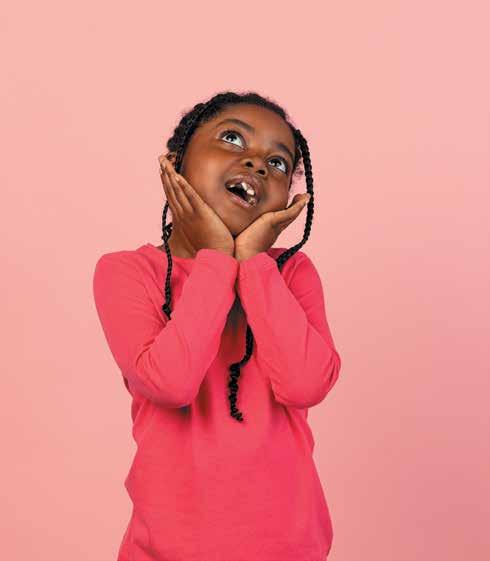
realization that, “Life is uncertain, and God’s the only certainty,” said Anthony. Still, independent of her heart issues, recovery from pregnancy took longer for Cora, and their ages also affect their discernment at this point of their family life. They believe the beauty of the teaching means not even ‘closing the door’ to God’s movement in their hearts, even if for the time being, the answer for the couple has been, “not now”. They feel a peace is with them—a peace they know comes from God.
Nathan and Angelia Sather of Fargo, N.D., parents of 10 children, came to embrace theology of the body gradually during the first years of marriage.
Angelia, 40, an at-home mother, recalled her reaction to St. John Paul II’s teachings: “Wow, this is beautiful! There’s a deeper meaning and purpose behind human sexuality and spousal love—and I was not taught this growing up.”
Angelia came into the Catholic Church in 2005, right before her first daughter, Emily, was born. Baptized Christian, and with some relatives who were Catholic, the theology of the body revealed to Angelia a deeper joy in its discovery. The teaching spoke to her heart, while Nathan recounts his re-version as more intellectual.
“It was a revelation for me to hear the message that my body is made for something special! God has imprinted the capacity to know him through the human body, and through living out the meaning of the body and marriage, we can image the Trinity—Angelia and I just fell in love with it,” said Nathan, 42, a full-time military employee.
Welcoming their first two children within the first two years of marriage, the couple desired a pause from child-bearing so Angelia’s body could heal and they could keep up with their two toddlers. Angelia remembers her fears at the time, “‘I’m going to just keep on having kids and keep on having kids—I’m obviously fertile—that’s not going to stop. I can’t do this without a break!’”
While they realized the truth and the beauty present in the theology of the body, its total integration into their
married life took some back and forth and they navigated these fears regarding fertility in light of responsible parenthood. Using contraception between the births of their first and second children led to a disconnect between the joy they experienced in learning this teaching—and the difficulty they had in beginning to live it out. They knew, as Nathan put it, “We were not on board with Jesus,” when turning to contraception. The sting of that disconnect led him to a renewed reading and research, and he shared the fruits of that with Angelia.
He was struck by the Catholic Church’s steadfastness—alone among all Christian churches—in its teaching against it. “Before 1930, all denominations said contraception was wrong. So theology of the body made it very clear to me that I am called to be a Catholic,” he said.
Realizing the gift they are for each other and the gift of their children, they prayed about the desire for a larger family. They stopped contracepting and—surprisingly—pregnancy didn’t occur the next month or the next. They waited, wondered and struggled. A year and a half passed.
“We started wondering if perhaps the contraceptive use had damaged Angelia’s body, or if maybe we were no longer able to conceive,” said Nathan. They worked through sadness but as they came to a place of acceptance, the Sathers thanked God for the gift of the two children He had given them and felt at peace.
The adoption journey shows a beautiful and unique facet of marital fruitfulness and the theology of the body, especially for Timothy and Kara O’Malley.
“As I would articulate it now,” said Timothy, 41, a sacramental theologian from Indiana, “the fruitfulness of our marriage has been opening our home to these two kids.”
An adopting couple has to have “openness to the gift of the child as child, not becoming some sort of object for personal self-fulfillment,” Timothy said. “Radical hospitality necessitates openness to the person in need, period. That’s the Christian virtue.”
Timothy’s son was adopted through a more traditional adoption agency process, while the couple’s daughter, five years later, came to them in a seemingly random set of rapidly unfolding circumstances. “Literally, we received a phone call, went to the hospital, and then 24 hours later, she was in our home. We were not expecting it,” he said.
The next month, their daughter, Megan, was conceived.
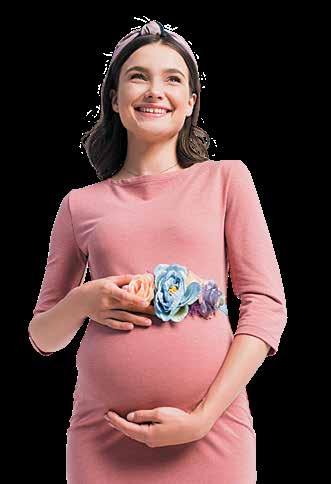
“Megan is definitely a visual reminder of how God really is in control. This is the providential care of the God who loves you and desires your good. When we said, ‘OK, we’ll give up what we want,’ we got more than what we wanted in return,” Nathan said.
The Sather family consciously keeps the call to be fruitful in mind and opts to focus on a simple life filled with non-material blessings. As such, they have not discerned financial reasons
Opening their hearts and home to the possibility of children came from the openness of self-gift. Timothy noted how responsible parenting has shaped them. “I think part of responsible parenting around adoption is recognizing what parenting is in general—first there is biological procreative openness to the gift of life and the sharing of that mutual love between the spouses. But there also follows a lifelong gift of self between the parents themselves and to the child from both of them as they care for and attend to all of the needs that child has as it grows. There is a lifetime of Trinitarian love within a family, whether the child is biological or adopted.”
‘The child is always a gift’
“Megan is definitely a reminder of how God really is in control. This is the providential care of the God who loves you and desires your good.“
to postpone pregnancy. They limit some material things, such as cable TV or cell phones for each family member, in order to focus on time together.

Yet the couple acknowledges it is easy to over-focus on financial or material concerns in considering responsible parenthood. “People just automatically think about materialistic things,” Angelia said. “I feel like it is so much more than that. We have been led to see that the responsibility is to give them a Christ-centered life—to get these children on the path towards heaven. We feel like we have been doing that to the best of our ability, with God’s help.”
For the Sathers, the timing of several pregnancies surprised them. Even within responsible parenting and using NFP, the openness of the couple to life gives God space to act—in a way that can be hard to accept at first. Angelia admits she likes to have control, so sometimes she was really challenged. She recalls the close spacing between Megan and their next daughter, Kimberly.
“Doing the calculations in my head, I was like, ‘Oh my gosh, Megan isn’t even going to be 1-year-old and I’m going to have another baby! It’s going to be like having twins! How am I going to do this?’” she said.
“I prayed a lot to just give up that control, to say, ‘OK, Lord, obviously You’re giving these kids to me for a reason.’”
In prayer she tried to trust in God, affirming, “OK, God, I’m with you.” Gathering a supportive and lifeaffirming community of friends around her helped her embrace this pregnancy.
As their last three children were born, health issues for Angelia came to the forefront. “I’ve always had problems with my blood pressure, and the last children came early. When we got pregnant again, I wondered, ‘Am I going to be able to bring this baby to term? Could I die from giving birth?’” said Angelia.
Despite the health concerns that Angelia has faced with the later pregnancies, the Sathers haven’t lost the sense of peace and trust in God that responsible parenting has given them.
Angelia summed up the beautiful journey she and Nathan are on. “Our entire marriage, basically our entire Catholic life, is wrapped up in the theology of the body,” she said.
Nathan added, “I think this life is not only the best life possible, but there’s freedom in it. I trust God as my Creator, who is the perfection of every good. I’ve learned that my ultimate happiness is gonna come from Christ; He knows what’s best for me far better than I do.”
For the Sathers, that’s the power of the theology of the body, bringing a peace that has surpassed their understanding.
Natural family planning methods, also known as fertility awareness methods, are completely in line with theology of the body principles because they honor the body as God designed it, and couples who use them honor the God-given meaning of their acts of marital love.
With a fertility awareness approach, couples can learn to observe, record and interpret the woman’s natural physical symptoms in order to identify the fertile and infertile times of her cycle. These methods are green (using no hormones, barriers or surgical devices), highly effective (with efficacy rates rivaling those of artificial contraceptives) and have no side effects.
Using prayerful discernment, whether a married couple is ready to have children or to delay pregnancy for just reasons, they time their lovemaking accordingly, deciding to abstain during the fertile times if necessary. In this way, every time they do come together they are physically making a complete gift of themselves as God designed them—thus, reflecting with their bodies what they said with their words during their exchange of vows at their wedding.
Learn more at naturalwomanhood.org or myparishnfp.org
Human beings are only valuable when they are wanted by someone else. Sounds like a horrific thing to say, and yet, I want to know why it’s true. I want to understand why the life of every person I know should make a difference to me. And I want to know why, 12 years ago, I laid my hand on a tiny pink gingham coffin and watched in tears as it was lowered into the grave.
Why did a crowd of mourners weep with me? What we were sad about? Were we sad about my daughter’s death only because her family wanted her? Or should we— even if no one wanted her—have been sad anyway?

If Rachel were alive today, she would be in sixth grade. She would look just like her older sister if baby photos are anything to believe. Photos. That’s the only way I know what she looked like. It’s been so long that, without them, I can’t remember her face.
Except for those lips. Ruby red, though I don’t know why. I had expected them to be blue. She had been dead for several hours when she was born, after all. I would think I had imagined those beautiful lips if not for the photos.
Those photos. I can’t bear to look at them most of the time, even all these years later. But I’m fiercely glad they exist. I’m still so incredibly touched by the thoughtfulness of the nurse who forgot to bring me pain medicine three times because she was taking such perfect photos of my daughter. In those photos, you can’t even see her torn eyelid—a sign that she had already begun to return to the dust. She just looks like she’s sleeping.
Maybe that’s why it’s hard to look at them.
Maybe that’s why it’s hard to ask questions such as these.
Why did I weep? Why the crowd of mourners? Certainly we had something to be sad about, but what? Why should Rachel’s life—any person’s life—make a difference to me? And what makes a person valuable? The fact that he is wanted by someone? Or is it something else entirely?
For that matter, why rail against the idea that human beings are only valuable if they are wanted by someone else? Why shouldn’t we value my daughter more than the baby aborted by its mother that same day? Why mourn one and not the other? Do the photos of my sleeping beauty matter more than the sonogram images cast aside along with the aborted baby’s corpse?
No one wants to ask these questions. And yet we must. We must ask why a baby in a tiny pink gingham coffin matters. Because if a human being is only valuable if he is wanted by someone else, then all of us are worthless unless we are wanted.

And all of us are disposable the minute we’re of no use to someone else.
But the theology of the body says something different. It reveals that, by the nature of who a person is, what she is, and that she is, every person is of infinite worth—regardless of whether the person is loved, rejected, wanted, appreciated or valued.
By human individuals, that is.
That’s the surprise. It’s true—our value does come from Someone else. It comes from the God who loves us so much that He paid for us at the price of his blood. We as human persons are valuable because we are wanted by him. The one who fashioned us. Our arms, our legs, our hearts are physical evidence of a desire so deep and pure that it takes on flesh. Our bodies are like photographs that reveal the value God has given us.
That’s not the sort of thing you throw away.
We’re valuable because we are wanted by him. The one who fashioned us.

 by Steve Pokorny
by Steve Pokorny
At 5 years of age, my life changed.
I’d been born into a comfortable two-parent home, but in 1985, at age 5, that comfort was gone. My father, a Vietnam veteran with a get-rich-quick mentality, wagered our house on the stock market without my mother’s permission—and lost.
Acting upon the faulty notion that our family needed financial support more than his physical presence, my father believed it would be better to kill himself than to lose the house. He went into the garage, closed the door and turned on the car in an attempt to end his life. When my mother found him 30 minutes later and dragged him out of the garage, he was alive, but his short-term memory would be gone forever due to carbon monoxide poisoning.
The good news was our family was taken care of financially because my father was a veteran. But my father’s condition prevented me from really knowing him. After the accident, he was placed in a nursing home and I would visit him every few months but his deficiencies prevented any kind of normal relationship. I felt abandoned, grew up insecure and questioned the point of my life.
When I was 17, my father, at age 51, began to lose a lot of weight. Doctors discovered he had developed brain and lung cancer and did not have much time left. I was

angry and nervous, but I knew I had to say something to him before it was too late.
During one of my few visits to hospice, I sat down and was honest with him. I looked him in the eyes and said strongly and clearly, “Dad, you abandoned me. You walked out on Mom. You left Brian. You were not there when we needed you most.”
For a brief moment, he looked back into my eyes and said, “I know.” That was his way of saying, “I’m sorry.” That moment was the start of a very long path of forgiving him. Three weeks later, I lost my father for the second time.
Growing up, I never discussed sex with my parents.
In elementary school, I remember writing Mad Libs with one of my friends, filling in all the blanks with
sexually explicit words. My mom caught us and sat me down for a little chat. “Do you know what sex is?” she asked. “Sure,” I answered. That was pretty much the extent of our conversation.
Since I lacked true sexual education, I had to learn on my own. It really is true that “what isn’t taught will be caught,” and I certainly was predisposed to be infected by the porn epidemic. My earliest exposure to pornographic material was in fifth grade—age 10—when my friend and I discovered several copies of my brother’s Sports Illustrated Swimsuit issues. I knew I was attracted to these images but did not know why.
In sixth grade, as I was crossing from one block to another in my suburban neighborhood, I saw a brown paper bag filled with paper in the middle of the street—it was as if Satan had “accidentally” dropped a piece of forbidden fruit just for me. I picked up the bag and realized it was not just any type of paper but ripped up images

experienced mixed emotions. On the one hand, there was definitely something very attractive about what the men and women were doing on the screen. On the other hand, I had intense feelings of guilt. The more I watched, the uglier I felt.
One day we got caught watching a video at my house by my mom’s boyfriend. I knew my mom was going to find out, so when she came home I immediately went up to her in tears and confessed my crime. There was no condemnation on the part of my mom. Instead, she wrapped me in her arms and showed me the love only a mother could give. She gave me the intimacy I was looking for from porn in the first place.
Soon thereafter she sat down and talked with me about what was on the video. She told me she watched it briefly, and that there was nothing beautiful or lovely in what she saw. She could not understand why I would want to watch it. To this day, I can still recall the scene my friend and I were watching when we were busted. It turns my stomach now, realizing porn really is all about power and domination, yet as a youth, I did not understand this. My mother was trying to teach me why this was wrong, but she did not have the language to explain it.
of naked body parts. Later, after assembling the pieces, I discovered that it was hard-core pornography. I knew what I had discovered was contraband, so I took it home and hid it in the basement. I was ashamed of what I had seen but was extremely excited and ended up blabbing about my find to a classmate. When I showed the images to him, he could not help himself. He offered me $20 for the bag on the spot. For an 11-year-old, I had hit the jackpot, so I traded up.
During this time, I would occasionally stay over at the house of another friend who had cable television. His mom had remarried and he, like I, was Catholic, yet neither of us had a healthy understanding of the relationships between man and woman. We would often stay up into the wee hours of the morning trying to watch scrambled Playboy on cable, hoping to catch glimpses of something.
During the summer before eighth grade, when I was 12, I hit “the big time” and my life would be forever altered. One day, a friend invited me to his house and we watched TV. Not just any television program: It was hard-core porn. We had a seemingly endless supply of pornography, thanks in part to his parents’ nearly countless videos stashed in their room. As we watched, I
By the time I was 14 I was no longer simply watching images but acting out when alone. Because I was raised Catholic, I came to understand that the guilt and shame I was feeling was because of my sinful choices, so I went to confession. I still remember the first time I confessed looking at porn—I told the priest I had fornicated, having no idea what I was actually saying.
As I hit the later years of high school, my compulsion worsened. I would watch for hours, unable to pull myself away and I was left with horrible anxiety. My guilty conscience would make it difficult to sleep, and at times I would take NyQuil to knock myself out to overcome the noise inside me. When I would awaken, shame would be pounding at the door of my heart.
At school, I was very outgoing, involved in drama club and show choir and often known as the class clown—I was voted by the senior class “most likely to trip while going to get his diploma.” Yet in my mind and private actions, the darkness inside of me was growing. On a typical evening, on my drive home at night after hanging out with friends, I would contemplate what would be showing on Cinemax. Although I may have been able to fool others into believing I was extremely confident and comfortable around people, I could not deceive myself, for I knew viewing lustful images was crippling my ability to form bonds of communion with those around me. I was a young man with two faces. I
The false promise of intimacy offered by pornography leads instead to an ever-deeper alienation that cripples the user’s ability to experience truly intimate human contact.
—Most Rev. Paul S. Loverde
had become deathly afraid of anyone getting to know the real me, because I thought they would not like what they would see.
I went to Syracuse University in New York to major in acting, and the internet was newly available in every dorm room. On the one hand I was involved with the Newman Center and was growing in my Catholic faith, but there was nothing but a roommate stopping me from getting a steady supply of my drug. I legitimized it because, hey, every guy in my hall was into it—one guy who was teaching me guitar had a vast amount of his hard drive caked with porn images. And it was readily available elsewhere—the local movie theater on campus showed eroticized flicks all the time.
The situation grew worse. In my first two years in college, I experienced an emotional shutdown. I lived a flatline existence, feeling neither lows nor highs except during occasional fleeting moments while indulging in porn. Pornography had neutered my spirit and my capacity to truly form bonds of intimacy with others. What was left was a dull ache in my heart, a hurt I thought could not be mended.
Even through my emptiness, God was still trying to speak to me. Sometime during that year, because I still continued to pray—as well as confess nearly weekly my lustful habit—I received what I thought was a genuine call to the priesthood. The following year I moved back to Cleveland and transferred to Borromeo Seminary where I began undergraduate studies in philosophy.
It was during this time that I truly met Jesus in the Eucharist, knowing He was alive and real, physically present for me in every Catholic Church. Somehow I had never really got this until then. Building off of what I learned at the Newman Center, I also continued to develop my relationship with Mary, our Mother, primarily through regular recitation of the Rosary. These two very Catholic elements would eventually help draw me forth from the darkness.
Throughout seminary, I struggled with my attachment to porn, and I came to realize that I was not the only one who was having problems. Because our formation did not really touch on this subject, and because my spiritual director simply gave me the typical advice most people are given who are trying to overcome pornography, there was no real victory, merely toleration.
By the time my undergraduate years were over, I felt completely defeated and told myself this was my cross and I would have to carry it for the rest of my life. I would never be free—or so I thought.
I was also confused about where God was calling me. I seriously questioned whether I was being called to priesthood, for I was radically struggling with celibacy. The Catholic Church teaches clearly: Those with non-integrated sexual desires are not to be ordained to the priesthood. They are to be fully in possession of themselves to freely give themselves away to the whole Bride of Christ as a celibate in Holy Orders. For my three years at minor college seminary, I told God, “I’m going to be a priest.” Instead, I should have been asking: “Lord, do You want me to be a priest?” So in order to really discern well, I chose to continue on to the Major Seminary at St. Mary’s Seminary in Cleveland.
During that year, I became more serious about questioning my vocation. Through this, I was granted some relief from my compulsion—although it would come out to play every so often.
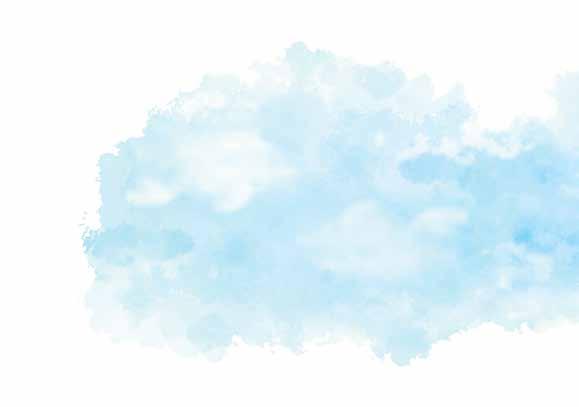
I began to pray a Holy Hour most days in front of the Tabernacle where Jesus in the Eucharist resided, rising at 6 a.m. to pray. Although I struggled with my theological studies, I remained committed. I was involved in the community and was striving to grow in masculine intimacy with my brothers. I was faithful to my apostolate of serving at a local parish. I also began working out on a regular basis, which helped to direct my energy from pent up frustrations and stress.
Even though I was striving for balance, I still was not satisfied. I was yearning for someone—some woman—to be with me. While celibacy is a genuine gift and my respect for priests was growing immensely, a pain in my heart and a question in my head would not go away: What if there is someone out there for me? What if, in all those lonely days through junior high, high school, and college, of longing for female companionship, God had one woman prepared for me?
Through a very special experience in prayer one morning, I knew, deep within the recesses of my heart, that although celibacy is a gift, God had not granted it to me. I needed to jump. I did not know where I was going, but I realized that if He had led me into seminary, He was going to light my path.
A human person … cannot be an object for use… The body is an integral part of the person, and so must not be treated as though it were detached from the whole person.
—St. John Paul II
Fast forward to the summer of 2002, when my friend Ellen gave me an audiotape. I thought it was just another apologetics tape. She told me, “Just listen to it.” When I finally pressed play while getting ready for work some weeks later, I was dumbfounded. It was a presentation by Catholic theologian and author Christopher West, who was explaining God’s plan for the human person and the gift of sexuality. My jaw hit the floor. By the end of the tape, I realized this vision of life—this understanding of what it means to be male and female—was everything for which I had been searching.
As I began to learn more, I had a mixture of emotions. On the one hand, I experienced great hope, realizing I was not abandoned in my struggle for sexual purity. On the other, I felt a deep pain because I was so far from where I needed to be and had no plan in place to break free from the chains binding me. It sounded almost surreal: “Could this message be true? Could I really be set free from my lusts?”
Just when I thought my cup was overflowing with too much love, it happened. Boom, boom, boom, BOOM—my chains hit the floor! I experienced my first tangible, potent sense of freedom. For the first time in my life, I had a genuine experience of freedom from compulsion to pornography. Just as St. Augustine was liberated from his bonds of slavery to sin when he read the words of St. Paul, “Put on the Lord Jesus Christ, and make no provision for the flesh,” I no longer desired to look at sexually explicit images. I had been set free. He had brought me to such beauty—namely, Himself—that the desire to use women gave way to a desire to serve and love them humbly as my sisters in Christ.
—TOB 19:1
In 2003, I was accepted for the masters program in theology at Franciscan University of Steubenville in Ohio. Little did I know, God had much more in store for me than a degree in theology and catechetics. Among the attractions of Franciscan is its charismatic approach. At my first worship meeting, it became apparent that God was beginning his work in me. One of the Scripture verses proclaimed several times that night was Isaiah 43:19: “Behold, I am doing a new thing; now it springs forth, do you not perceive it?” Through a crack in my stony heart, living waters were beginning to bubble up.
Over the course of many weeks and many daily Masses, God was trying to break through my darkness. During prayer after Mass one day, I felt an intense moment of gratitude for what Jesus was doing with my life. And then it hit me. It was not only Jesus who was moving me to gratitude. It was my Father—not just any father, but God the Father. This was the Father I had longed for. This union with God—my origin and my destiny—was what I had been yearning for in all of those empty pornographic images. At that moment, I knew I had a father, a father who wanted me more than anything.
How did this transformation happen? How did it come to be that I would be telling this story of freedom from my compulsion, let alone admitting publicly something that had crippled me emotionally? For years, I lived with fear. “Do not ever let anyone find out about this compulsion or you will be ruined.” But I did not have to fear anymore. The destructive vision of myself that had dominated much of my youth gave way to the “new thing” He was doing in my life. The clouds of darkness in my life dissipated and I heard in my heart the voice I had longed to hear, “This is my beloved son, with whom I am well pleased.” The Father? Pleased with me? After everything I had done? After all the times I had turned my back on Him, He still wanted me back? Yes, the Father was very pleased with me. At that moment I knew I had a Father and I was his son. After all the years of drinking the slop from the pigs, this prodigal was being called home. He knew where I had been, but that was not important to him. He wanted all of me, not the masks I presented to others in public.
I wish I could say that from the moment of knowing the Father’s love was real I had no problems with pornography.
For about four months, it was true; I had total access to the internet in my room but I had absolutely no desire to look at porn. But like Peter, who took his eyes off of Christ and tripped on the waves, I took my eyes off Christ and sank hard into the septic tank. Although my falls became less frequent, there were times when I felt the impulse to lust and could just not say no.
Over time I came to realize what happened. Although my heart had tasted real love and I was seeking out pornography less and less, my brain was still enslaved to the images. My neural pathways were still programmed

The fact that “they did not feel shame” means that the woman was not an “object” for the man, nor he for her.
to respond in a lustful way to these images and they had incredible power over me. Although my heart was open to the light, I was still blind, in need of having my brain rewired and my vision redeemed. That began a whole new journey of seeking psychological healing.
It was my spiritual director who told me of a traumatologist who used a unique form of Intensive Trauma Therapy (ITT). This therapist explained what happens to the brain in a traumatic event (or rather, my years of traumatic events), and that I needed to have my brain rewired so I could form new neural pathways. This would not be done by anything as drastic as shock therapy, but rather the whole process involved drawing and writing. She further explained that ITT is designed to bring light to darkness, truth to lies and wholeness to disintegration.
I was skeptical that something so simple could bring me healing, but I was in such emotional pain that I was willing to do whatever was required to break free. Over the course of a week, I worked the program for eight hours a day and gradually felt shame lifting and peace taking its place. As the ensuing weeks passed, I realized that what I had experienced was not temporary. I had received substantial healing, and my shame had been
absorbed by genuine love. I finally felt as though I was in possession of myself, able to freely live my life as a gift.
Little did I know, it would not be from running from the body, but learning how to properly see the body, that would put the final nail in the coffin of my attraction to pornography.
Receiving this redeemed vision grounded in theology of the body led me to one of my heart’s greatest desires: my wife, Valerie. We were blessed to be married in June of 2009 and, as a testament to the truth that God’s great love is so much greater than any of the false “loves” pornography can tempt me with, He revealed to me what true sexual pleasure is supposed to be within the marital embrace.
That was not the best part. About 15 months later, from my wife came forth a little person who changed me forever. Although conceived nine months prior, on Sept. 15, 2010, I held in my arms one of the deepest meanings of my masculinity; my daughter, Isabella Rose, was living proof of the father God had destined me to become. The fruitlessness of pornography was transformed into a fruitfulness that has changed the planet, for every birth recreates the world anew. I am eternally grateful to my heavenly Father for the privilege to participate in this great and noble calling—He has since blessed us with two other daughters, Francesca Grace, and Joy, who is in the arms of her Heavenly Father.
In response to my restored masculinity and redeemed freedom and in thanksgiving for all God has done for me, I began Freedom Coaching (freedom-coaching.net), a oneon-one mentoring system designed to break the bondage of those ensnared by pornography. It is my hope that if men can reclaim the meaning of their masculinity and pledge their sacred honor to the dignity of all women and children in their lives, we will see the culture of love and life blossom in the world.

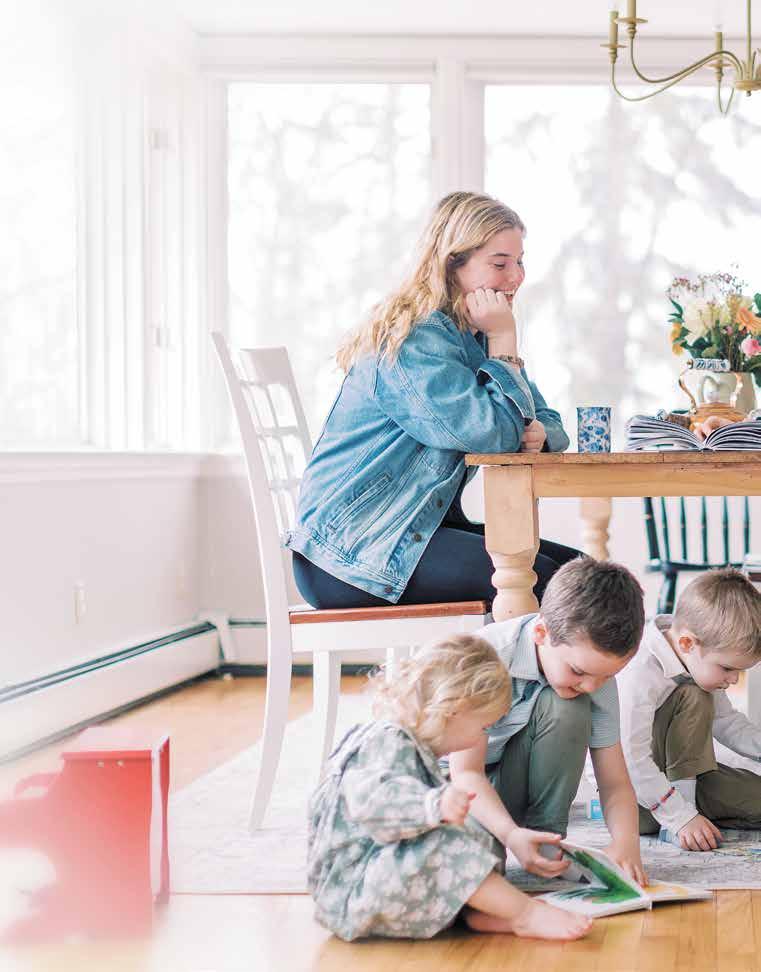 Story by Kathleen Basi
Pictures by Caitlin Renn
Story by Kathleen Basi
Pictures by Caitlin Renn

never thought of herself as a perfectionist. In fact, she always considered herself pretty laid back... until she was a stay-at-home mother of three.
“I’m an introvert,” said Emily, 30, a photographer from Pittsburgh. “The constant noise and activity start to grate on me.”
She loves all things beautiful, all things serene, and she wants her home to be calm and beautiful.
It’s a tricky balance with three kids 5 and under. She wants them to play and imagine—the 4-year-old taking out every couch cushion and blanket to make a fort or the 5-year-old playing soccer in the living room with the World Cup in the background are great things. “But I still like to go to bed with a clean house—at least the kitchen and the main living space. It makes my heart go faster when there’s a mess all over the floor and I can’t walk through it.”
For many of us, hospitality means welcoming others into our homes. This is a Christian virtue and charism. It’s also a charge of the theology of the body: What is hospitality if not making a gift of self and welcoming the other?
Yet hospitality is hard. We’re stretched thin and living in a world where it’s all too easy to define ourselves by how we compare to others in our social circles or on social media. How, then, do we live out this calling?
Emily’s family recently attended a surprise birthday party for a friend.
“I would have cleaned my house if I knew all these people were coming!” her friend remarked.
But Emily saw only a house where every square inch was filled with love. “I almost felt embarrassed that she would think I was judging her,” she said. “As a guest, I was just struck by the people, the warmth, the children, the light.”
When we consider hospitality through the lens of the theology of the body, there are two simultaneous truths at work. On the one hand, our homes are, to some extent, reflections of ourselves. So when we let people into our homes, we are inviting them into a part of ourselves. It can be scary to let people see our messes.
“It’s been striking me lately that hospitality requires so much humility and vulnerability,” Emily said.
At the same time, the theology of the body calls us to make a gift of ourselves to others. In terms of hospitality, that means being present to another person and not being preoccupied with the surroundings.
Emily pointed to a night when her family hosted an engaged couple for dinner. “Usually our home is so insular. At this time of day, we’re racing to get the kids to bed. It’s a mess. And then suddenly you let strangers into that? It feels like the gig is up! They’re seeing our real life!”
Yet she savors the memory of that night. “It was really fun to hang out together and for them to see normal family life.” The condition of the house didn’t matter as much as the gift of their presence.
It’s easy, in these days of showcase homes on social media and HGTV, to feel discontented. Emily loves
The theology of the body calls us to make a gift of ourselves to others.
In terms of hospitality, that means being present to another person and not being preoccupied with the surroundings.
interior decorating. She enjoys finding the items that express who she and her family are. She, too, shares beautiful photos of her home on Instagram. But the messes still exist. They’re just behind the lens. Also, beautiful, self-expressive homes do not happen in a single sweep of the home improvement store. “Making a home takes time,” she said. “If I shared what my house looked years ago, it wouldn’t be the same. My home has changed because I am a different woman.”
Much of her home decor was bought off Facebook Marketplace, and many of the items took six months to a year to find. “It’s OK for your house to be unfinished for years,” she stressed.
When we see those Instagram influencers, with the before-and-after, we sometimes forget that this transformation cost a ton of money and time—and was probably paid for by someone else.
Besides, when you’re invited to someone’s house, are you excited about the house or the people? Being warmly greeted, listened to and made to feel seen is what we all long for—a chance to experience communion. Living hospitality, according to TOB, means existing in the moment, accepting good enough and receiving our loved ones and our surroundings, warts and all.
And isn’t it a relief to walk into someone else’s home and see that it isn’t perfect? That they, too, have to exist amid cluttered counters, marker-scribbled wall sockets and dinged-up hand-me-down furniture? Hospitality lets us give this same gift to others.
“Even if you think other people have it all together, have the perfect houses, they don’t,” Emily said. “All of us have unique gifts. Sure, maybe someone is objectively more organized than you are, but that doesn’t mean every aspect of their life is better. I can keep a clean home, but I still struggle every night to make dinner!”
In other words, hospitality is not about the space, but about the gift of self, the communion of persons.
It can be easier if you’re hosting people in the same stage of life. If both you and your guest have young kids, it takes some of the pressure off. You certainly don’t want them to feel they can’t come over for fear of messing up your house!
But taking time to prepare for guests and clean your house is a gift of self, too. When Emily recently visited her sister, she felt this gift. “I had my own bedroom. My brother-in-law brought a space heater and laid the


towels out nicely. I knew they put some thought into me coming here.”
Preparing for guests is a way of acknowledging and honoring their innate human dignity. When we prepare for guests by cleaning, even mundane tasks like sweeping the floor or preparing a meal become a way to serve others. And offering to watch someone’s kids? A huge act of service and hospitality. This is the TOB principle of self-gift in vibrant color.
For some people, questions of hospitality are much more difficult. Jeremy and Maria Henson, of Hallsville, Mo., were less than a year into parenthood when their baby was diagnosed with life-threatening food allergies.
The Hensons grew up in strong Catholic families in which food and fellowship were inseparable from hospitality and faith. Finding out their first child could die if exposed to certain foods was crushing.
“Some people with allergies can be in a place and mingle and maybe even eat a little and be OK,” said Maria, 39, a homeschooling mom of three. “There’s the medium level where a person can’t eat it, but they can be around it safely. And then there’s that high level.”

For Cari, the Hensons’ daughter, milk, peanuts, tree nuts and eggs evoke an almost instant combination of rash and wheezing. When they received the diagnosis, they didn’t know what to do. Where could they go safely when babies crawl around on the floor and put things in their mouths? Even church was risky. “We thought we wouldn’t be able to do family or community gatherings for years,” Maria said. “It really hit home how much food is involved in every aspect of our lives.”
At first, they thought they could simply do all hosting themselves. “But that was difficult too,” said Jeremy, a 39-year-old financial aid officer. “Friends with young children would bring snacks that Cari was allergic to.” And even adults carry allergens into the house on their hands, faces and clothes. Until Cari was old enough to manage her own food allergies, their ability to be in community was severely limited.
For families in this situation, the hardest things are the isolation and the inability of others to accept and accommodate. For Jeremy’s mother, eating out was a major part of community. Maria and Jeremy tried to preserve the tradition. “We’d be very explicit,” Jeremy said.
“Restaurants have an allergen menu, but we’d say, ‘You must clean the grill.’ And the problem was, the allergens were all over the restaurant.”
After one manager, fearing liability, refused to serve them anything but plain chicken breast, the Hensons decided it was better just to eat at home.
According to Father Jacque Philippe, we have a significant moral duty
“to reclaim large areas of peace in ourselves, more and more peace, and to reflect it towards others. And the more peace there is in us, the more peace there will also be in our troubled world.”
.
This quote resonates powerfully with Emily Hannon.
“When I am most at peace, most secure in who I am as a daughter of God, a wife and a mother, then I am able to be most present to my family and to anyone who enters my home,” she said. “That gift of presence is the greatest thing we can offer as we welcome people into our lives and homes: being present, being vulnerable, feeling safe enough to share our joys and struggles in a real way with one another that honors the human person and creates a bridge between them. We can strive for order and beauty within our homes while also honestly sharing the difficulties and suffering that goes on in them, too.”
Family members, friends and community members of people facing such profound barriers to hospitality have a unique opportunity to put the theology of the body into practice. We have such strong expectations surrounding what hospitality looks like. What do you do when the dignity of the other requires you to set aside those expectations or to adopt a whole new paradigm?
Early on, the Hensons prepared for a visit by laying out their rules. “Nobody in the house can eat anything
—Father Jacques Philippe, Interior Freedomshe’s allergic to while we’re there,” they said. Everyone said they understood, and yet the next thing Maria knew, someone had eaten an egg for breakfast before they left. In a hurry, not thinking, that person gave Cari a kiss on the cheek on the way out the door.

“I couldn’t do anything,” Maria said. “It was like I was watching it happen in slow motion.”
The door closed. By the time Maria got the EpiPen, Cari was already wheezing. “The rule is, you give the EpiPen and call the ambulance,” she said, “but we were in a rural area. We just got in the car and headed straight for the hospital.”
The Hensons realize it can be hard for others to be challenged to change their rituals or be inconvenienced. They have encountered resentment from some who believe the burden belongs solely to the person with the medical condition. In responding to this, Maria says that to reflect Christ she has learned to die to self to avoid harboring resentment in return.
And it helps her stay grateful for those people who do care enough to find the ways to accommodate her family’s needs.
Because despite the difficulties, Maria knows that “hospitality is about communion. It’s as necessary as breathing, as air. There sometimes need to be accommodations in order for that communion to take place,” she said. Hospitality is a call to see each person in all their human dignity and make the effort to ensure that no one is isolated from community.
Eventually, the Hensons developed a set of rules that allowed them to have limited visitors. People have to avoid eating right before coming; they have to take off their shoes and wash hands upon entering.
“The allergens change what we can offer,” said Jeremy, “but no matter what we’re offering, you’re coming together and giving the opportunity to image God to each other.”
It’s still hard, especially when otherwise good people show unwillingness to accommodate. But Maria offers
Hospitality is a call to see each person in all their human dignity and make the effort to ensure that no one is isolated from community.
grace. “People are in different stages in their lives,” she said. “Until it clicks for them, it’s just where they are. We’re called to be patient and wait for people to understand.”
For Len and Gail Froyen, of Cedar Falls, Iowa, the practice of their faith over the past four decades has revolved around hospitality toward college students.
Len, 88, is a retired deacon for the archdiocese of Dubuque who served at St. Stephen the Witness Catholic Student Center, across the street from the University of Northern Iowa. When the Froyens moved to Cedar Falls, they chose to attend the student center instead of a local parish.
“The energy of the students was really important,” said Gail, 85, a mother of three, grandmother of four and great-grandmother to four. “When we went to the Wednesday night student Mass, the kiss of peace took 10 minutes, because everybody went around the whole church. We got to know a lot of kids that way.”
St. Stephen doesn’t offer programs for schoolchildren or adults. Their mission is college students. “The priest directors were insistent that if you were going to come to St. Stephen as a non-student, your responsibility was to work with the students,” said Gail. “To get to know them, to make them feel welcome in any way you could. You just didn’t go there because it was a convenient time and place to go to Mass.”
As deacon, Len was assigned to St. Stephen and then to work with archdiocesan formation of new deacons. He operated out of the student center and participated in its ministry. Over the years, the Froyens volunteered as sponsors for marriage prep, for marriage and student retreats, and more. Gail, a storyteller, trained and practiced with the lectors.
St. Stephen’s motto is “Pray, serve, belong.” But “belonging”—hospitality—is where it starts. Gail remembers adult staff keeping watch for students who were alone, who looked lost or insecure. Staff would grab a student they already knew and say,
How can you reflect Christlike hospitality when facing obstacles to typical expressions of hospitality? Here are some tips.

1Search your heart and pray for openness. Sometimes, our own biases create barriers to discipleship.
2
Be willing to step outside your comfort zone, whether that means masking during a pandemic or accommodating severe food restrictions. Remember that it’s not about our convenience and comfort but about being self-gift.
3
Food restrictions are not the only barriers to hospitality. Maria Henson pointed to people who truly cannot handle crowds—for example, some on the autism spectrum. Those people need communion too. Carve out time for a one-on-one visit.
4 When someone tells you their restrictions, adopt a can-do attitude. Don’t make them feel their restrictions are a burden on you. Ask, “how can we make this work?” Maria’s mother took over food prep for every family gathering so the Hensons could attend without worry for their children’s safety. Another friend deep cleaned her house so that they could host the Hensons. “It still touches my heart to think about it,” Maria said. “That was a big gift.”
“Go stand by that person! They don’t know what to do!”
“This helped kids understand how to be hospitable to each other,” Gail said.
This is important because when students feel welcomed, comfortable and valued in the student center— when their inherent human dignity is honored—they are more open to participating in spiritual and service programs.
Len says this feeling of belonging begins with the most elemental selfgift: listening. “That sounds simple,
but it isn’t,” he said. “At daily Mass, students express their intercessions. You learn a lot about what students are concerned about, what bothers them.”
As deacon, he offered the first spontaneous prayer and then listened to their petitions. This often led to conversations after Mass.

Len draws on his wife’s experience as a storyteller. When students come to school, he says, they have a story of who they are and how they fit into the world. At the university, they have to write a new story. St. Stephen’s job is to help them weave their faith into that story, so they can go into the world and give that story away: to become self-gift to the larger world—through marriage, yes, but also through career and life choices.
So if hospitality facilitates a student exploring his or her faith, then it is a gateway to holiness—a holiness expressed through self-emptying, self-gift and service to the presence of Christ in the other. “You can’t really separate holiness and service,” said Gail. “Jesus asked us to take care of the sick, feed the hungry. At St. Stephen, opportunities are provided for service. Now, lots of our
students come from small towns, and they have no doubt grown up with the idea of taking care of their neighbors. But to learn to take care of people at the larger state, national and world levels is different. That kind of service comes out of faith and prayer.”
THE HANDS AND FEET OF CHRIST
Hebrews 13:2 reminds us, “Do not neglect hospitality, for through it some have unknowingly entertained angels.” Perhaps it’s more to the point to remember that when we open ourselves and our homes in a holy exchange of persons, we are entertaining Jesus himself.
You can’t really separate holiness and service. Jesus asked us to take care of the sick, feed the hungry.

 by Maria Cossell
by Maria Cossell
Once while reading a book with friends, I started to question what beauty really is. What is the beauty that I am being attracted to, that moves my heart?
I came to the realization that beauty is all around me. I see it in a mother who refuses to give up on her daughter who has autism. Beauty is when a friend follows the desires of her heart, starts her own business and trusts in God daily to provide for her. It is in a priest who prays with a member of his flock who is taking his last breaths. Beauty is a family bringing their young children to Mass even though they may struggle to sit still and just want to talk to those around them.
All this beauty that surrounds me helps me to realize that beauty can be found in the daily actions of others. It is also in the moments of utter surrender to God, just as it is in the moments of giving oneself to another.
However, there is something so beautiful that it surpasses all actions of humanity. It is the beauty of a small consecrated host. That is where the true essence of beauty can be found. God, who became man and was brutally killed for us, has left us with his heart in the Blessed Sacrament, the Eucharist.
Why would God care so much about you or me to do this? We are beautiful in his eyes because of our inestimable worth. We are his beloved, created in his image and likeness. He refuses to leave us orphans so left us the gift of the Eucharist so He would always be physically present to us. He continually gives himself to us. The sacrifice that took place on Calvary almost 2,000 years ago is re-presented every day in churches throughout the
world. How beautiful it is that He continually gives his body to us, to nourish us body and soul!
This beauty can be found in a golden monstrance in adoration chapels, too. It is here that the God of the universe waits to encounter you and me. I am drawn to him like a newborn baby to its mother. I often do not want to leave because it is here that my heart is at peace, where I can find a reprieve from the chaos the world has to offer
us. As I sit and bask in the rays of his grace, I find healing and stamina to continue to persevere in a world that appears to be so dark at times. This beauty is life giving.
I have found the beauty that I have always longed for, that I was made for. This beauty has changed me, caused me to become more of the human person God has created me to be. The beauty of the Blessed Sacrament is not just intended for me. It is a gift for all humanity, a balm for the wounded world. The question is: Will you open your own eyes and heart to this beauty that is ever ancient and ever new?

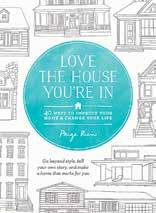 by Christina Ries
by Christina Ries
It was two days before Thanksgiving, and Instagram was flooded with images of beautiful dining rooms with artfully layered tablescapes.
Then came a post from former HGTV designer Paige Rien: a blank square with the simple text, “The home is not a stage despite what you’ve been told.”
She elaborated in the caption, writing: “You don’t have to wow anyone on Thursday or at any time this holiday season. Hospitality is sharing what we have, not showing what we have or a shiny version of ourselves or our children…As women and hosts, we’re connectors, and we sacrifice this beautiful dimension of the feminine genius when we’re so busy trying to manage ‘the audience experience.’”
It felt like a permission slip. A deep exhale. A huge relief.
Comments poured in.
“Just what I needed to hear,” one woman wrote.
“Like a weight lifting off my shoulders,” a mom wrote.
“I wrote notes on this on the side of my lengthy to-do list,” another mother commented. “I think I might just toss that list and relax!”
Paige is shaking up social media with powerful messages like her Thanksgiving note, drawing on the theology of the body and her Catholic faith. Most of the reminders she needs herself, encouraging women to “Love the house you’re in”—the title of her first book. Ultimately, she says, the lived-in and loved-on look is better than the immaculate imagery on Instagram, which can be alluring.
“It’s very hard to deflect that aspirational notion unless you’re a monk,” said Paige, 47, a design consultant who lives with her husband, Francis, and their four kids in the DC suburb of Kensington, Md. “If you own stuff, we’re told this is the standard.”
But that standard is sterile, Paige says, stripped of personality. “Everything in design has become completely homogenized. We’re told to remove the personal in pursuit of an aesthetic.” But the personal—especially those symbols of faith—are what make a house into a home. Just
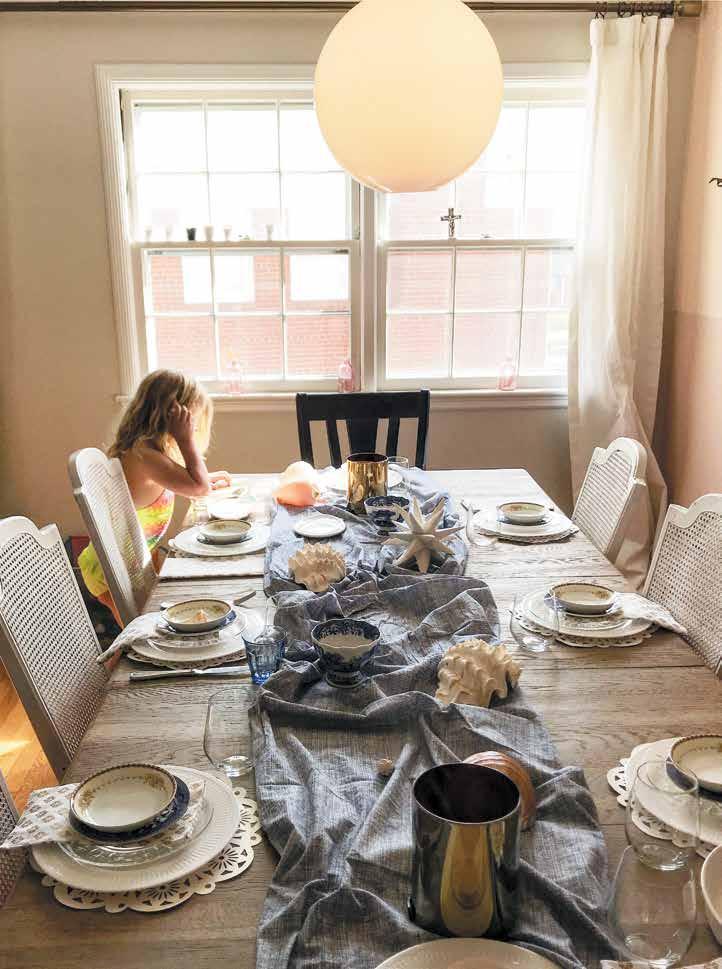
as the theology of the body teaches that the invisible is expressed in the body, so too a home can reflect something deeper.

“When I think about the house— there is much that needs to be addressed,” she says. “We think so much about just the structure and the marketplace. But a house is co-created. It’s not just the woman saying, ‘I pick everything.’ It’s meant to be co-created. It’s a living, breathing thing crafted by all the family members.”
You’re tapping into all their values and interests.
Yes! The making of a home is integrated with so many dimensions of our life—our faith, our wellness, our relationships within the home— woven into every detail. It has to all be put together. On HGTV, the designers dominate the conversation, and that doesn’t leave room for anything else. In my first book, I wanted to encourage people to look inward, to ask themselves questions, to figure out what makes you tick. Don’t just say you want what Pottery Barn has in their catalogue or what you see in House Beautiful or Architecture Digest.
I love how much encouragement you offer! Building a woman’s confidence is my primary purpose. There’s a huge crisis of confidence in women now.
Women are acting as if the design police are coming on Tuesday, and they will give them a fine if what they have isn’t acceptable.
Don’t spend so much time thinking your house is less than. A lot of that is wasted energy!
The way I see the world is there are so many possibilities for beauty, so many aesthetics that are attractive or interesting for different people. You can’t possibly get exterior affirmation across the board—so don’t even try.
Women are afraid of making a mistake. They’re stymied by options. And they’re afraid of a mistake that will reduce their home value. If you’re constantly thinking about a future buyer, she’s really elusive!
I studied architecture at Brown
You were an on-camera designer for 60 episodes of HGTV’s show “Hidden Potential.” Tell me about that experience 15–16 years ago.
It was a crazy time, but it was great. I learned that the model of HGTV is the designer as the guru while the homeowner is naive and stupid and needs to be told everything. That’s not my worldview.
I was given three pages of paper with vitals on the family—name, where they lived, stores they liked, how many rooms they needed. They didn’t want me to meet the family till the day we shot. I insisted: I need to meet this family! I need to ask them questions and learn about them. Ultimately, it became my process that I still use today: I want to know everything about you—all the details about the way you put together your life.
Women are afraid of making a mistake. They’re stymied by options. And they’re afraid of a mistake that will reduce their home value.
University, but passed on that track and took a sociology track. I’ve always been interested in people.
When I say I’m a home coach, I’m bringing in my experience as a mother and a person of faith. For people
Just as our culture often expects us to remove any evidence that children live in our house, so too are mothers expected to remove any evidence that they’ve been pregnant.

“A Mommy Makeover”—the term coined by plastic surgeons who reshape the breast and abdomen areas most affected by motherhood—is in fact a series of operations designed to make you no longer look like a mother.
our relatives and what’s been possible in our lives. If I hire an interior designer to do it all, I skip all of that. We’re skipping the vocation.

How can we express our values in our homes?
Whatever’s on your wall, that’s what your kids are learning. It’s important we take that seriously. If the saints speak to you, show them. Display the symbols of your faith.
who are passionate about their faith, there is a dovetail. They see the value of the home as a domestic church.
I don’t care how much money you have. You are the expert of your life! To have someone come in and design it all misses a huge piece: who you are and your story and how you really live. We have an obligation to teach our children about ourselves,
A house should reflect your vocation. Tell us more about that?
Well, if you haven’t redone your house in a while, you’ve likely been busy with more important things. Maybe you’ve taken care of your children or an ill parent. The real work, your real vocation, involves your relationships and the formation of your children and your marriage
Why hide the evidence that your body grew a life within you? That your torso stretched to fit an 8-pound baby (or bigger!) and your legs helped support the extra weight? That your breasts sustained your baby, providing all the nutrients needed in his or her first months of life? Why alter the stomach that tells the story of a C-section that allowed for a safe delivery and a healthy baby?
Scars are not flaws; they are stories. Our bodies express our identities as mothers. Why erase the signs of life and love?
—Christina RiesI don’t care how much money you have. You are the expert of your life!
and the formation of yourself. We’ve gotten confused. Secular culture would want you to just keep buying and renovating and decorating every season. If you do that, you aren’t focused on yourself. You can get a lot of satisfaction in going to Target and get a little boost, but you’re missing a lot of important life work.
Every year we’re urged to buy new Easter décor, new Christmas décor. The old stuff isn’t good enough—we need more.
At one point, you have to be done so you can do the real work. The real work is harder: it’s hard to raise children, to raise boys who don’t use foul language, to not neglect your marriage in the midst of busyness. That stuff is way harder. Things are easier. I can look at plates and set tables for days. I love to set up for a party. But when people arrive, that is more challenging. People are harder than things.
Does it help to make a distinction between hospitality and entertainment?
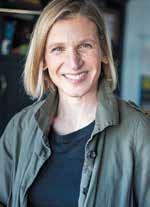
Yes! Nobody wants to hear, “I’m so sorry my house is dirty, ugly, unrenovated.” We’re making it too much about ourselves! Post 2020, people are delighted to just be out. You can show up as a host in a much different way when you’re not apologizing or feeling so bad. We forget about some of the tried-and-true hosting skills of really listening, putting on music, playing a game, remembering that your nephew really loves Baby Yoda. I had 25 people on Christmas Eve— all these college and high-school kids. How do you host them? It’s not with decorating. They just wanted to be together.
How has the theology of the body influenced you?
It’s mind blowing because it’s so different from the way I was taught
in 1980s American culture—then your value was the degree to which you could be attractive enough that someone would want to have sex with you. Women today are still told that their sexuality is their value.
I wish I knew the theology of the body at a younger age. Even with motherhood, I wish I could go back. The moment my first son was born, I thought, “Oh my gosh, I have to be on TV in six weeks.” Which was true, but I should have focused more on how my body just did an amazing thing!
If I had known my children were going to get so big so fast, I would’ve relaxed a lot more and just stared at them.

I get so many DMs from women who are
struggling to accept what the home looks like with children. It is dying to self, but dying to self has so much fruit, and only the Catholic Church can teach you that. I was a design-obsessed person, and God gave me three sons in four years who were very tall and could reach all the things on all my counters and break things and bring frogs in the house and shoot nerf guns. I would say:
“Lord, don’t you know who I am? This doesn’t work!”
But I learned it was who I am, and I love the fact that my kids forced me to shift.
Editor’s note Learn more about Paige, including the faithbased design course she recently developed, at paigerien.com and on Instagram at @paigerien.


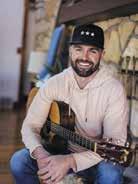



“How indispensable is the witness of all families who live their vocation day by day; how urgent it is for families to pray and for that prayer to increase and to spread throughout the world, expressing thanksgiving for love in truth, for ‘the outpouring of the grace of the Holy Spirit,’ for the presence among parents and children of Christ the Redeemer and Bridegroom, who ‘loved us to the end.’
Let us be deeply convinced that this love is the greatest of all, and let us believe that it is really capable of triumphing over everything that is not love.”
—St. John Paul II, Letter to Families 1994 Photography by Carli Winkels from Pine & Poppi pineandpoppi.com/photography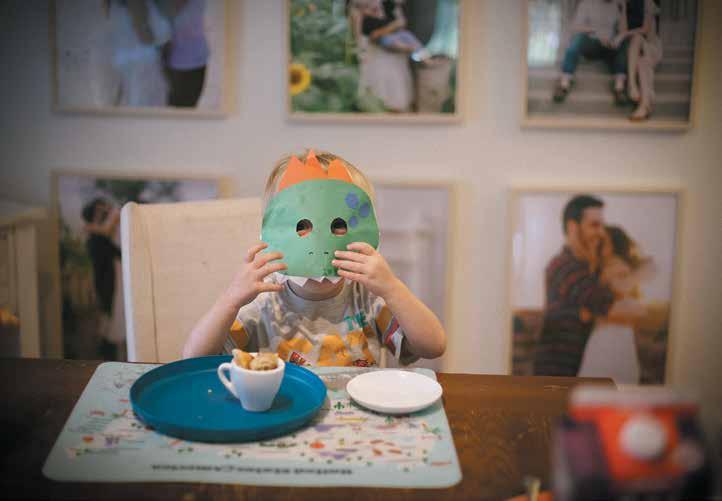

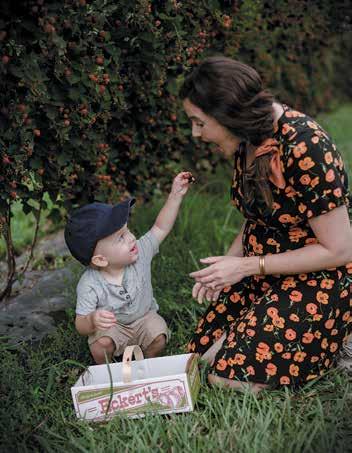
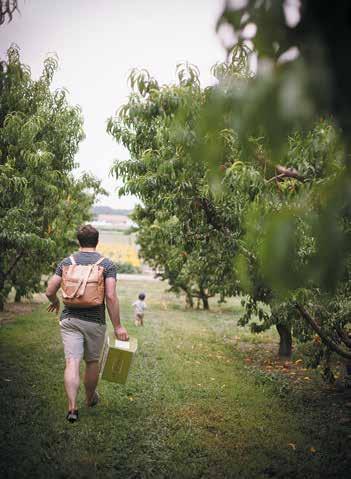

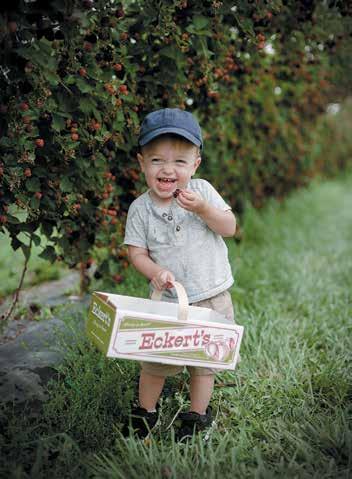


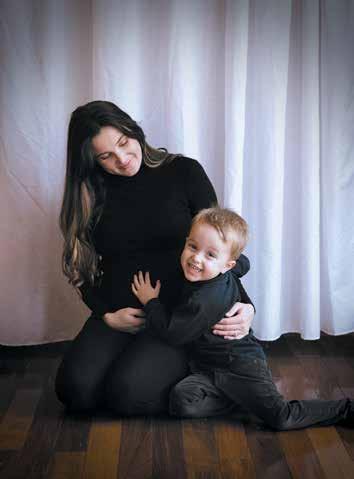
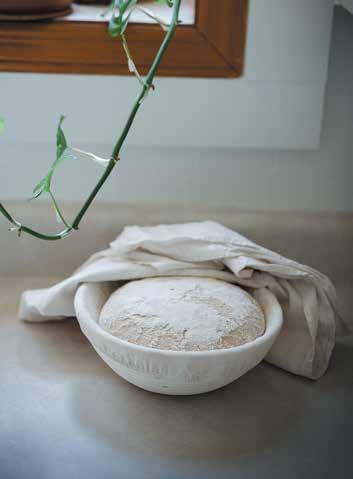
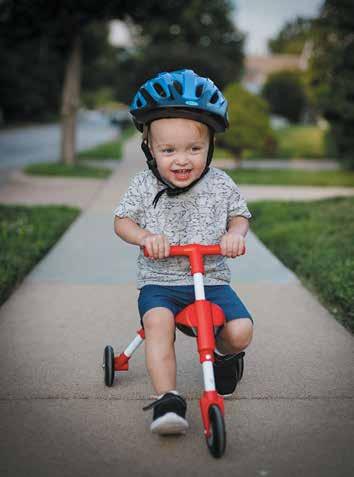
We are looking for advertisers, partners and distribution channels. Contact founder Ann Gundlach at ann@embodiedmag.org to discuss how Embodied magazine can help you.
Do you believe in the potential of the theology of the body to change the culture? Join us! We believe Embodied magazine can play a tremendous role in reaching new audiences, and we need donors to help sustain us as we build a subscriber and partner base. Contact founder Ann Gundlach at ann@embodiedmag.org to learn more.

We are looking for enthusiastic supporters who can represent Embodied at Catholic events local to you (i.e., women’s conferences, homeschooling events, etc.). Our dream is to have volunteer ambassadors scattered throughout the U.S. who can be our hands and feet in places we do not yet have the means to reach. Contact founder Ann Gundlach at ann@embodiedmag.org for details.
